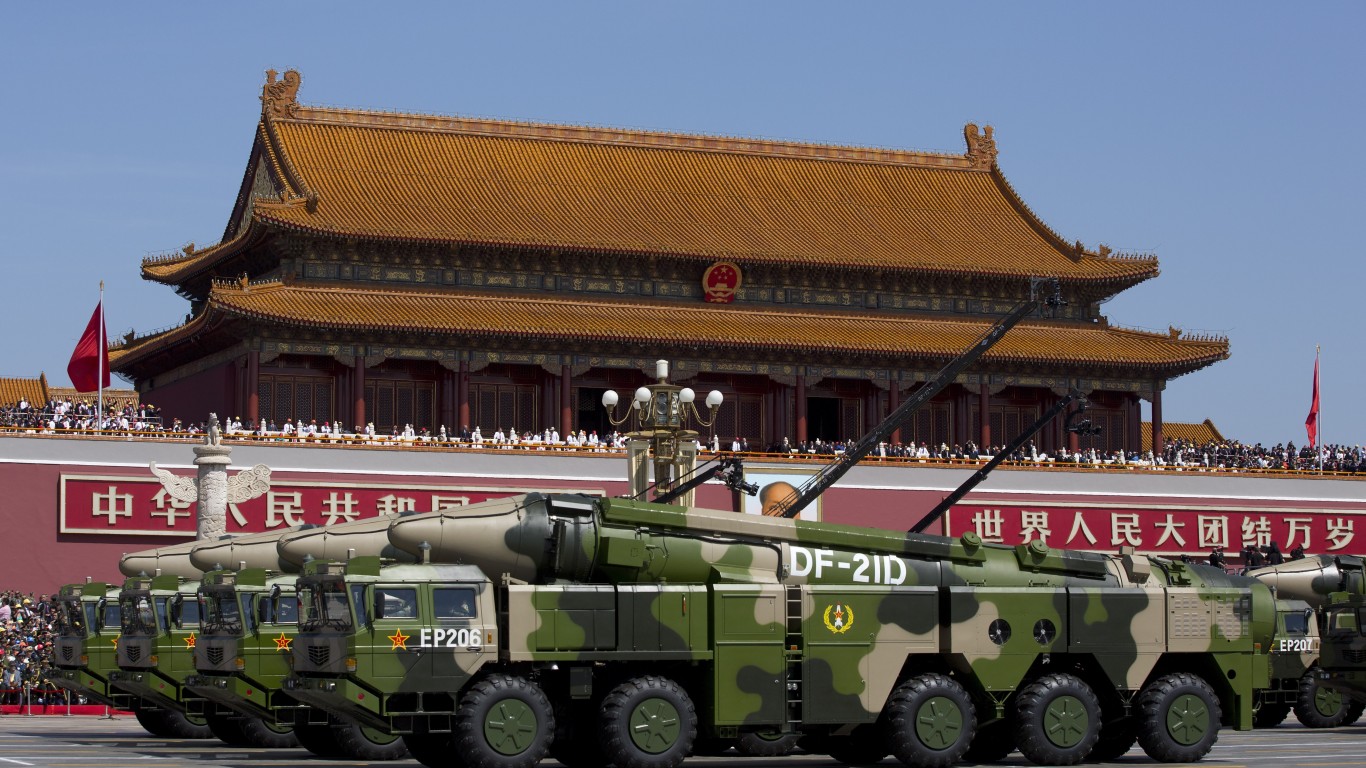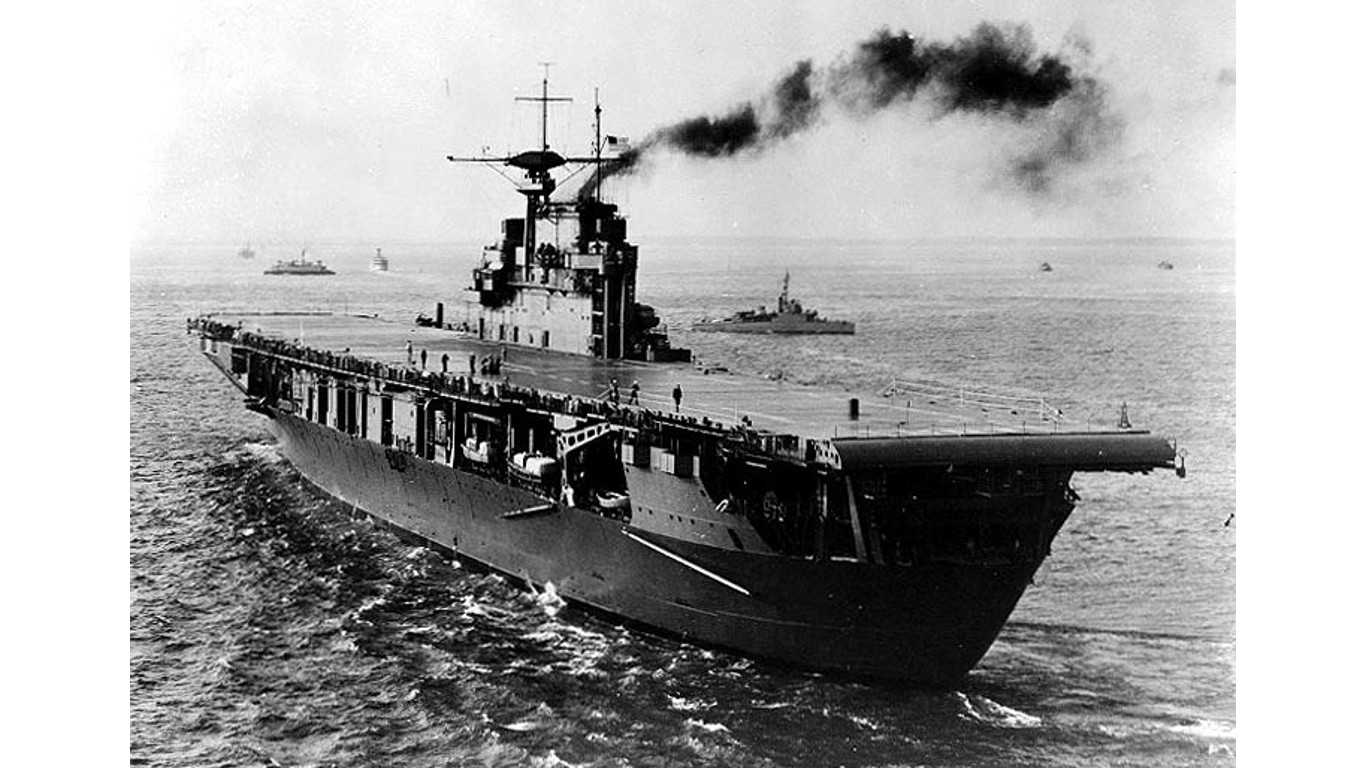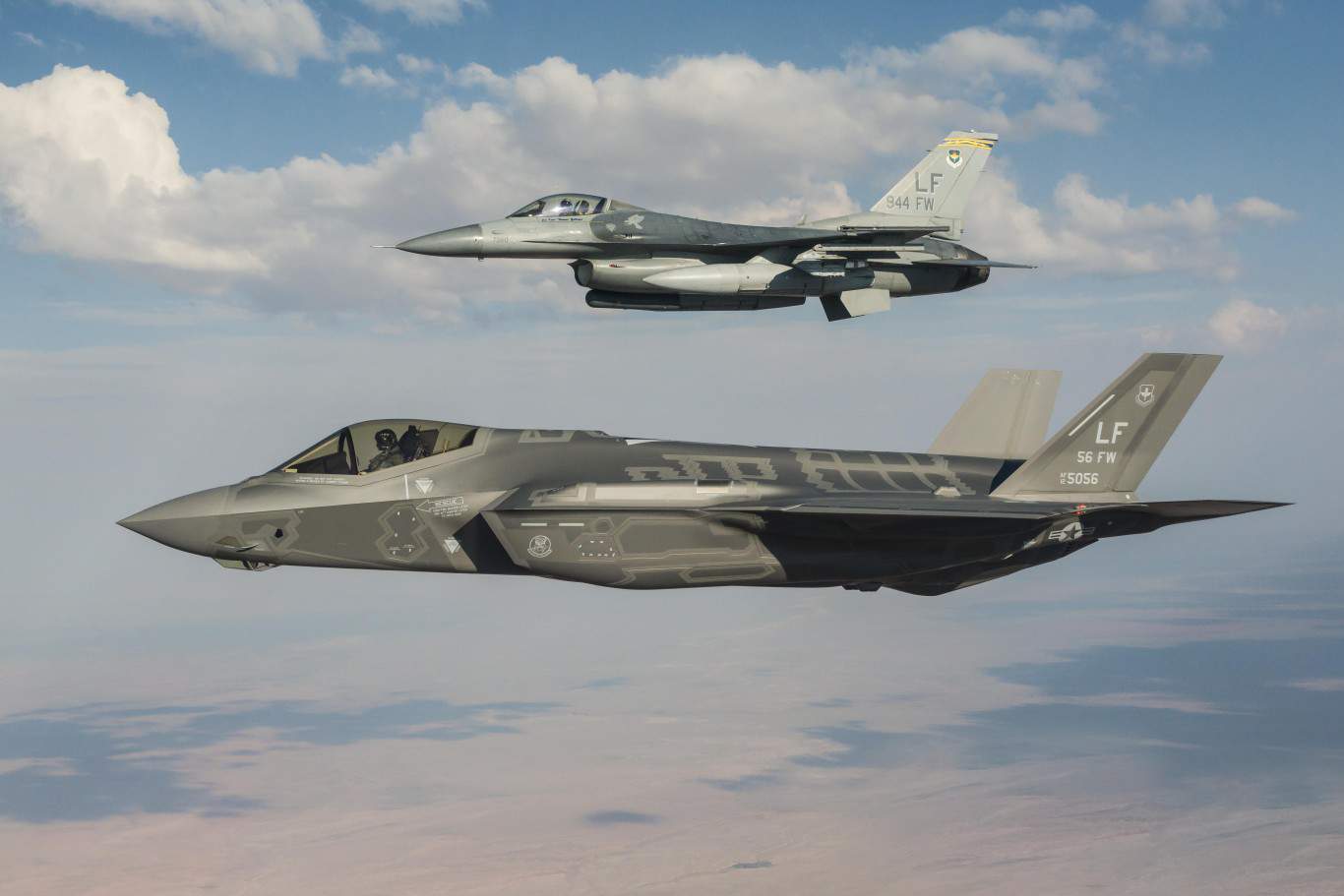
In 1940, the Japanese Navy launched the Yamato and the Musashi, the two largest battleships ever constructed. They were the acme of the ship construction, triumphs of engineering and firepower yet they were almost immediately obsolete. Naval warfare underwent a major paradigm shift from the battleship to the aircraft carrier in World War Two.
As the United States contemplates its future challenges, there are suggestions the aircraft carrier might also have had its day. New weapon systems to counter carrier groups are emerging at far less cost. Can the enormous outlay to build and maintain a Ford-class aircraft carrier still be justified? This article will explore the case against and the case for continuing to make the aircraft carrier the focal point of the US Navy.
Why This Matters

China has significantly advanced its anti-access and aerial denial (A2/AD) munitions, which could pose a serious threat to US carrier groups. These investments are part of a larger modernization program to deliver a world-class military by 2035. With the serious threat of an invasion of Tawain looming, the United States must consider its military spending priorities seriously.
The Case Against
Cost

The USS Ford cost at least $13.3 billion to build and a further billion annually to maintain. Three other Ford-class carriers are currently under construction. All the carriers built by the United States are assembled in Newport News, Virginia. The shipyard employs almost 26,000 people. Additionally, 13,000 workers across 48 states manufacture components used in construction. In other words, their construction creates thousands of jobs, and politicians have a major incentive to keep building them, regardless of necessity.
The Ford-class carriers are almost twice as expensive as the Nimitz-class vessels they’re replacing, yet they are not twice as capable. For the cost of one carrier, the Chinese military can construct over 1,200 anti-carrier missiles.
“Carrier Killers”

China has invested heavily in A2/AD weaponry, the Pentagon estimated its stockpile of medium-range ballistic missiles doubled from 500 to 1000 from 2021-22. The DF-21D is a variant of the DF-21 launchers specifically designed for enemy ships. With a range of 1500 km (932) the so-called ‘carrier killer’ was part of a successful test against a carrier-sized object in 2013. The newer DF-26 has an even greater range and the Chinese military claimed it successfully hit a moving target in tests conducted in 2020.
These weapons don’t necessarily have to sink a carrier to be effective, simply posing a credible threat would be enough to keep carriers out of operational range. War Games conducted by the United States in 2022 concluded the US would lose at least two carriers in a Taiwan scenario and many surface ships.
Irreplaceable

Losing an aircraft carrier would be a catastrophe the United States would struggle to recover from. The United States has just two shipyards dedicated to building large combatants meaning it would take decades to replace any carriers lost. Just repairing a badly damaged aircraft carrier would involve a long voyage back to the shipyards in Virginia. Even if victorious, the US Navy would take decades to recover from a war with China. Chinese losses would be replenished much faster, tipping the balance of power away from the United States.
The Case For
Lessons From History

Historically, there’s typically a gap between a new weapon emerging and becoming an effective tool of war. The tank made its debut in 1916 but had only a marginal impact on World War One. It wasn’t until World War Two that mechanized warfare came to the fore. Similarly, aircraft had a small role in the First World War but were center stage in World War Two. The aircraft carrier was a product of the interwar years, the first American aircraft carrier was the USS Langley in 1922. It was decades before they played a significant role in combat.
After the attack on Pearl Harbor left several battleships out of commission, aircraft carriers became the preeminent ship of the US Navy. They soon proved their worth and surpassed the battleship. The last time an American aircraft carrier was sunk by enemy actions was the night of February 21-22, 1945. During the Battle of Iwo Jima, the USS Bismarck Sea, was struck by a kamikaze. The Bismarck was an escort carrier about a tenth of the size of the USS Ford. Not a single aircraft carrier has even come close to being sunk in the nearly 70 years since.
Another lesson from history is that peacetime tests bear little resemblance to real combat. In the interwar years, the US bomber fleet famously boasted they could drop a pickle in a barrel from 18000 feet. In reality, any bomb that got within a mile of its target was considered a success. So it is one thing for China to claim a successful test, and quite another to prove it when it matters.
Tough To Kill

Even if China’s missile corps is as capable as claimed, there are still plenty of countermeasures to protect carriers. For one, they can move. Speed is hardly the first thing that comes to mind with an aircraft carrier and yet, they can cover some 700 miles in a day. One analysis found that it would take about 25 minutes from launch to impact. That’s enough time for a carrier to move about 13 miles out of the way.
Secondly, that scenario assumes the US would passively allow tracking and targeting without disruption. Naturally, the Pentagon isn’t exactly forthcoming about its cyberwarfare capabilities but it’s not exactly a stretch to imagine Chinese targeting systems could be disrupted. Fighter jets can bring down cruise missiles, and supporting ships offer another failsafe. Finally, the USS Ford has air defenses on board. Those defenses are upgradeable.
Deterrence

If the primary goal of the US military is deterrence, aircraft carriers still perform that job well. It is one thing to have the ability to take down an aircraft carrier and quite another to do it. Any adversary of the United States knows the prestige aircraft carriers hold and that attacking one would invite massive retaliation. The danger of escalation would be so acute that it’s probable a Chinese attack would seek to disable rather than destroy. If an aircraft carrier was sunk and 5000 American lives were lost, the situation would soon get out of hand.
In 1995-6, the US sent carrier groups to Taiwan in a show of force after China conducted missile tests off the coast of Taiwan. The gambit worked and Beijing backed down, though lessons were taken from the experience. Credibility is the cornerstone of deterrence and aircraft carriers can still be a part of that.
Versatility

As Bill Clinton once remarked in 1993:
When word of a crisis breaks out in Washington, it’s no accident that the first question that many people ask is: ”Where’s the nearest carrier?”
There’s still nothing quite like an aircraft carrier when it comes to force projection. As discussed earlier, mobility is a key feature ground air bases obviously do not possess. China’s missile stockpile can reach American bases in Japan, Korea, and even Guam. That mobility also allows a carrier group to move quickly to shore up American interests globally. Even China, for all its focus on anti-ship ballistics, launched its third carrier in May 2024 and has plans for a fourth.
Conclusion
The aircraft carrier has been the pride of the US Navy for over 70 years but new weapons systems threaten to knock the carrier off its perch. However, they remain unproven in real combat and it remains to be seen how effective these weapons truly are. However, if it comes to that, the United States has already failed. The aircraft carrier is still the best option the United States has as a visible and active deterrent. While the carrier’s time at the forefront of the fleet may end, it still has an important role in defense. For now.
Find a Qualified Financial Advisor (Sponsor)
Finding a qualified financial advisor doesn’t have to be hard. SmartAsset’s free tool matches you with up to 3 fiduciary financial advisors in your area in 5 minutes. Each advisor has been vetted by SmartAsset and is held to a fiduciary standard to act in your best interests. If you’re ready to be matched with local advisors that can help you achieve your financial goals, get started now.
Thank you for reading! Have some feedback for us?
Contact the 24/7 Wall St. editorial team.
